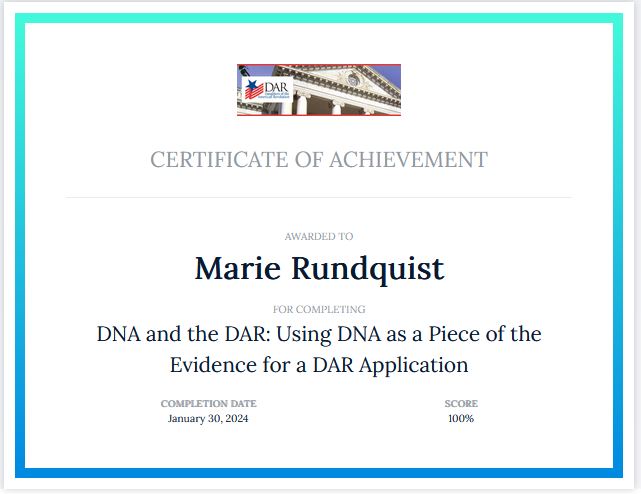|
Course required the application of core genetic genealogy principles to established NSDAR genealogy verification standards and practices within the framework of realistic applicant case studies. To learn more, visit https://www.dar.org/
Key finding: The same jewelry may have been worn by ancient people of different cultures and, as DNA has revealed, matching jewelry is not always an indicator of shared ancestry. Alex, B. (2024, January 29). "‘Landmark paper’ shows why ice age Europeans wore jewelry: Pendants and beads reveal nine cultures living across the continent 30,000 years ago." Science. News - Archaeology. https://www.science.org/content/article/landmark-paper-shows-why-ice-age-europeans-wore-jewelry
Origins of Ancient Picts revealed -- and an older hypothesis of a matrilineal society is called into question.
Findings from a recently published report, Open Access, Peer-Reviewed, Research Article: Morez, A. et al. (2023, April 27). "Imputed genomes and haplotype-based analyses of the Picts of early medieval Scotland reveal fine-scale relatedness between Iron Age, early medieval and the modern people of the UK." Plos Genetics. https://journals.plos.org/plosgenetics/article/peerReview?id=10.1371/journal.pgen.1010360
"The DNA of Privacy and the Privacy of DNA" - A Federal Trade Commission (FTC) Attorney Weighs In.1/9/2024
Jillson, E. (2024, January 5). "The DNA of Privacy and the Privacy of DNA." Federal Trade Commission. FTC Business Blog. https://www.ftc.gov/business-guidance/blog/2024/01/dna-privacy-privacy-dna Quotation from the blog post: "Companies selling genetic testing products tout the benefits of DNA-based insights – learning more about health, lineage, family tree – so that consumers can seek medical attention, customize their diet or exercise regimen, find long-lost relatives, or understand more about their background. But for consumers to realize benefits from DNA-based products or services, consumers need to be able to trust their accuracy – and trust that the company’s practices related to the DNA of privacy (data minimization, purpose limitations, retention limits, etc.) will protect the privacy of their DNA." Click here to read the rest of the article: https://www.ftc.gov/business-guidance/blog/2024/01/dna-privacy-privacy-dna See also: Kagan, O. (2024, January 8.) "Your DNA and the FTC: What you Need to Know." Fox Rothschild. https://www.jdsupra.com/legalnews/your-dna-and-the-ftc-what-you-need-to-5653890/
|
Archives
June 2025
Categories
All
|
DNA-Genealogy-History.com Site Index:
Copyright 2025 Marie Rundquist., DNA Genealogy History, LLC
DNA Genealogy History, LLC is a registered S Corporation with the State of Virginia and the Federal Government since 2017, is a retailer and distributor of books and digital publications, and is certified, authorized and empowered to collect Sales and Use Tax for the Commonwealth of Virginia.
E-Mail Your Comments to [email protected]
This website is not intended for users located within the European Economic Area.
DNA Genealogy History, LLC is a registered S Corporation with the State of Virginia and the Federal Government since 2017, is a retailer and distributor of books and digital publications, and is certified, authorized and empowered to collect Sales and Use Tax for the Commonwealth of Virginia.
E-Mail Your Comments to [email protected]
This website is not intended for users located within the European Economic Area.






 RSS Feed
RSS Feed
